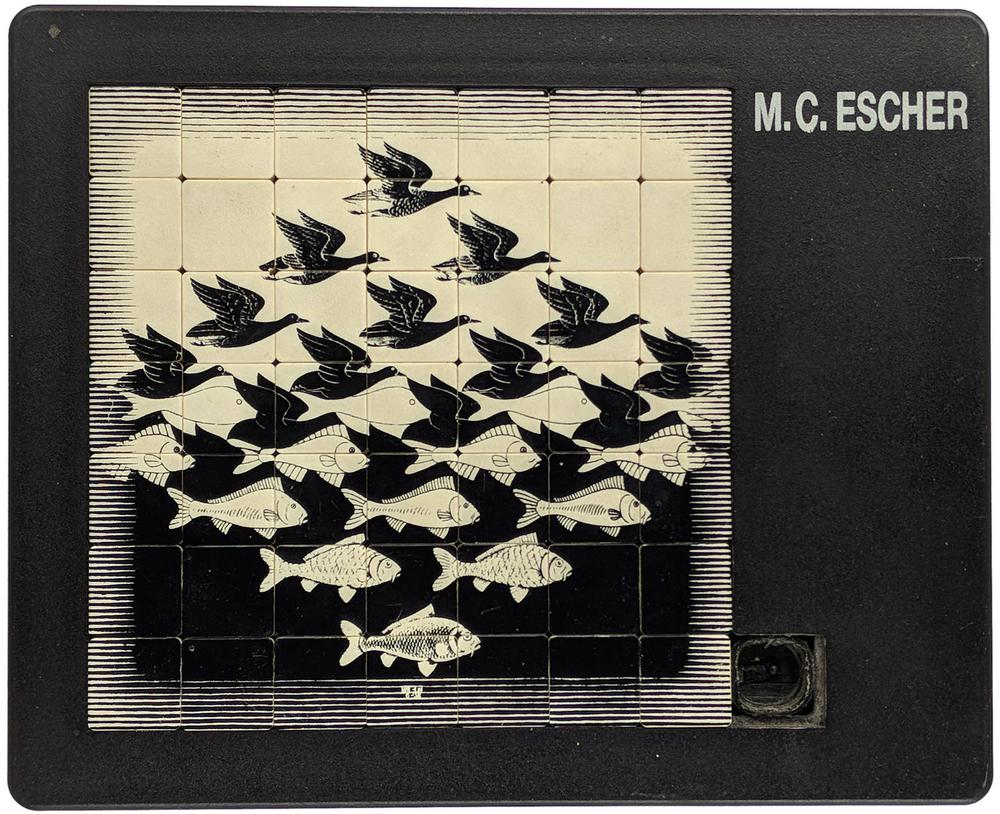

The body should remain in the middle square.

Tape 3 squares together, the animal’s head and tail should exit to top and bottom of the square (see the example photos) but not overlap each other when tessellated.Ĭut out the top and bottom paper squares so that you only have the head and tail. Look up a realistic photo online of a sea or sky animal for reference. I’ve done tessellations a few different ways over the years. It gives the unit some boundaries as students choose either a sea or sky animal to tessellate. Escher (of course!) and focus on his art piece “Sky and Water”. The difficulty level can be adjusted for the age group you teach too. They’re also a cool activity if your art room isn’t very large or you’re doing online learning. Tessellations are a great way to collaborate with math classes and sharpening hand-eye coordination. There are so many wonderful things you can do with tessellations and pattern is one of the major art elements that often gets overlooked by teachers. Maybe the repetition comes across as unartistic or too predictable? Perhaps art teachers don’t realize how easy they are to plan? Regardless, once you get going, sky’s the limit. Hunt using an irregular pentagon (shown on the right).Tessellations get a bad rap sometimes and I’m not sure why. Another spiral tiling was published 1985 by Michael D. The first such pattern was discovered by Heinz Voderberg in 1936 and used a concave 11-sided polygon (shown on the left). Lu, a physicist at Harvard, metal quasicrystals have "unusually high thermal and electrical resistivities due to the aperiodicity" of their atomic arrangements.Īnother set of interesting aperiodic tessellations is spirals. The geometries within five-fold symmetrical aperiodic tessellations have become important to the field of crystallography, which since the 1980s has given rise to the study of quasicrystals. According to ArchNet, an online architectural library, the exterior surfaces "are covered entirely with a brick pattern of interlacing pentagons." An early example is Gunbad-i Qabud, an 1197 tomb tower in Maragha, Iran. The patterns were used in works of art and architecture at least 500 years before they were discovered in the West. Medieval Islamic architecture is particularly rich in aperiodic tessellation. These tessellations do not have repeating patterns. Notice how each gecko is touching six others. The following "gecko" tessellation, inspired by similar Escher designs, is based on a hexagonal grid. By their very nature, they are more interested in the way the gate is opened than in the garden that lies behind it." In doing so, they have opened the gate leading to an extensive domain, but they have not entered this domain themselves. This further inspired Escher, who began exploring deeply intricate interlocking tessellations of animals, people and plants.Īccording to Escher, "Crystallographers have … ascertained which and how many ways there are of dividing a plane in a regular manner. His brother directed him to a 1924 scientific paper by George Pólya that illustrated the 17 ways a pattern can be categorized by its various symmetries. According to James Case, a book reviewer for the Society for Industrial and Applied Mathematics (SIAM), in 1937, Escher shared with his brother sketches from his fascination with 11 th- and 12 th-century Islamic artwork of the Iberian Peninsula. The most famous practitioner of this is 20 th-century artist M.C. Escher & modified monohedral tessellationsĪ unique art form is enabled by modifying monohedral tessellations. A dual of a regular tessellation is formed by taking the center of each shape as a vertex and joining the centers of adjacent shapes.


 0 kommentar(er)
0 kommentar(er)
